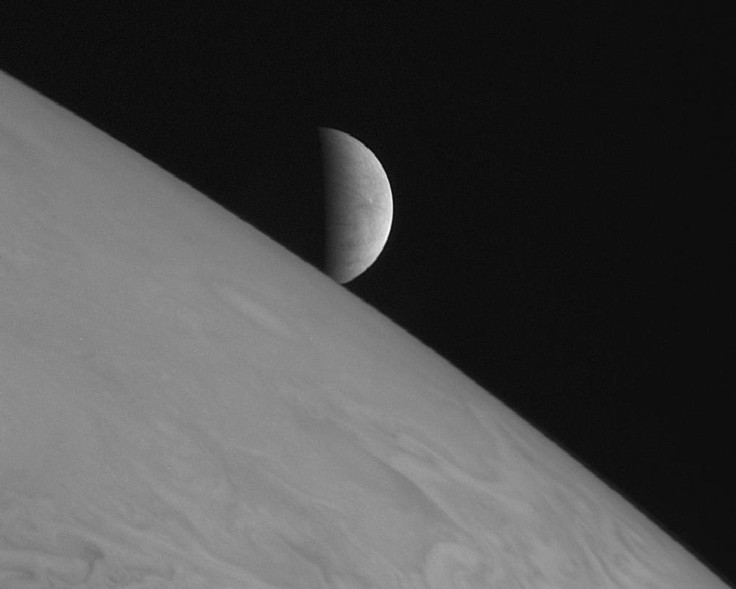NASA's Juno Snaps First Close-Up Look Of Jupiter's Moon Europa In 20 Years [Photo]
KEY POINTS
- Juno successfully made a close flyby of Europa on Thursday
- NASA shared the stunning first photo it captured of Jupiter's moon
- The Juno flyby captured "some of the highest-resolution images of the moon"
NASA's Juno spacecraft made a close approach to Jupiter's moon, Europa, this week, and captured the stunning first close-up view of the icy moon in decades.
The Juno spacecraft took the picture during its closest approach Thursday at 5:36 a.m. EDT, NASA said in a feature.
In the image NASA shared on Twitter, one can see the rugged details of the moon's surface, especially along the boundary with the night side of the body.
"This segment of the first image of Europa taken during this flyby by the spacecraft's JunoCam (a public-engagement camera) zooms in on a swath of Europa's surface north of the equator," the agency said.
This is the surface of Jupiter’s moon Europa, as seen – today – by our #JunoMission spacecraft from a distance of about 219 miles (352 kilometers). Click to see the full view! It shows a region near the moon’s equator called Annwn Regio. Learn more: https://t.co/0v96Hbw04U pic.twitter.com/OZhO5B4GW4
— NASA Solar System (@NASASolarSystem) September 29, 2022
The agency also shared the other raw images captured by the JunoCam that people can actually download and process themselves.
"(W)e encourage you to upload your creations for us to enjoy and share," the agency noted.
See more images at https://t.co/Ql7aCQMUsY pic.twitter.com/Rm6bKiHuzD
— NASA Solar System (@NASASolarSystem) September 29, 2022
For the flyby, the spacecraft came as close as 219 miles to the surface of the icy moon. Besides being only the third close approach to Europa that's lower than 310 miles in altitude, Thursday's pass also provided the closest look at Europa by any spacecraft since Galileo came 218 miles near the surface.
That, however, was way back on Jan. 3, 2000, making Juno's snaps of Europa the "first close-up in over two decades," according to NASA.
"It's very early in the process, but by all indications, Juno's flyby of Europa was a great success," Scott Bolton, Juno principal investigator from Southwest Research Institute, said in the NASA release. "This first picture is just a glimpse of the remarkable new science to come from Juno's entire suite of instruments and sensors that acquired data as we skimmed over the moon's icy crust."
And as the images continue to come in and get processed, we will likely be seeing even more stunning pictures that Juno gathered from its recent close approach, as they are expected to be "some of the highest-resolution images of the moon." Not only will the data it gathered provide a unique look at the sixth most massive moon in the entire solar system, but it could also shed further light on Europa's structure.
As NASA explained, scientists believe that there could actually be a salty ocean underneath Europa's ice shell. And the data from its Microwave Radiometer instrument, for instance, may help scientists further understand the structure of the ice beneath Europa's crust.
Such information could prove valuable for the future Europa Clipper mission set to launch in 2024 to study its atmosphere, interior, and surface. But as that mission is still years away, with the craft expected to arrive in Europa in 2030, people can enjoy the images captured by Juno for now.

© Copyright IBTimes 2024. All rights reserved.






















